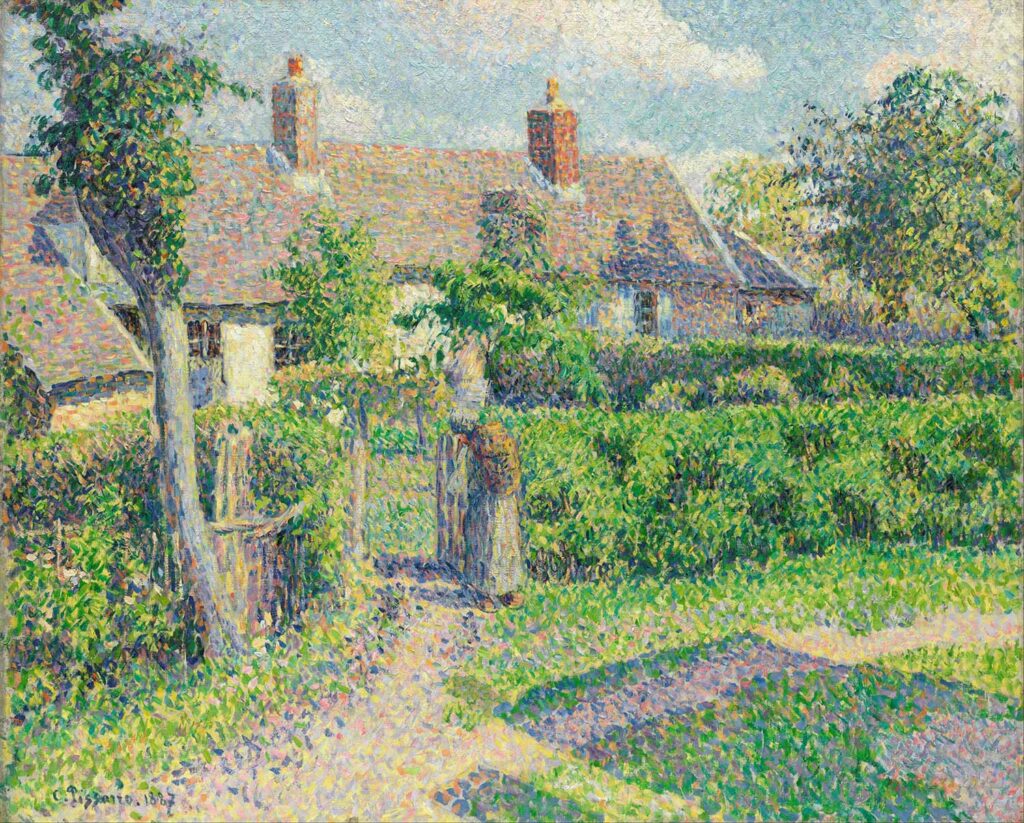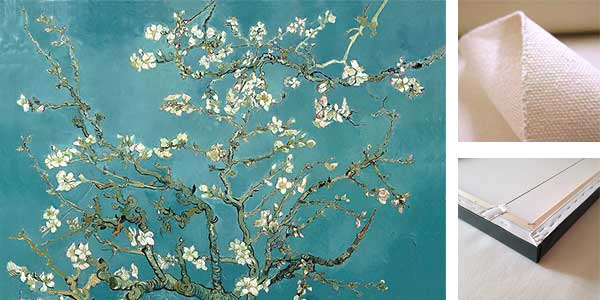
Peasants’ Houses, Eragny by Camille Pissarro was created in 1887. The painting is in Art Gallery of New South Wales. The size of the work is 59 x 71,7 cm and is made of oil on canvas.
Between 1884 and 1888 Pissarro experimented with the pointillist method of the younger Seurat. For an avowed anarchist it was perhaps no great step, but in art-historical terms Pissarro’s stylistic shift, however momentary, coincided with the end of impressionism’s avant-garde ascendancy. ‘Peasants’ houses, Eragny’ was painted during this fascinating interlude. Pissarro has fully absorbed the tenets and techniques of the distinctive style.
Form is constructed by discrete juxtaposition of individual strokes, or ‘dots’, of pigment. Atmosphere is suggested by chromatic scintillation. Surface is treated as a single unity. The mechanical effect which can deaden pointillist painting is obviated by Pissarro’s acute sense of the internal dynamics of design. The cast shadows intruding from the right are deliberately naive; this was to be an important innovation for the younger generation of post-impressionists such as Gauguin and Cezanne… Read more in Art Gallery of New South Wales
About the Artist
Jacob Abraham Camille Pissarro (10 July 1830 – 13 November 1903) was a Danish-French Impressionist and Neo-Impressionist painter born on the island of St Thomas (now in the US Virgin Islands, but then in the Danish West Indies). His importance resides in his contributions to both Impressionism and Post-Impressionism. Pissarro studied from great forerunners, including Gustave Courbet and Jean-Baptiste-Camille Corot. He later studied and worked alongside Georges Seurat and Paul Signac when he took on the Neo-Impressionist style at the age of 54.
In 1873 he helped establish a collective society of fifteen aspiring artists, becoming the “pivotal” figure in holding the group together and encouraging the other members. Art historian John Rewald called Pissarro the “dean of the Impressionist painters”, not only because he was the oldest of the group, but also “by virtue of his wisdom and his balanced, kind, and warmhearted personality”. Paul Cézanne said “he was a father for me. A man to consult and a little like the good Lord”, and he was also one of Paul Gauguin’s masters. Pierre-Auguste Renoir referred to his work as “revolutionary”, through his artistic portrayals of the “common man”, as Pissarro insisted on painting individuals in natural settings without “artifice or grandeur”. Read more in Wikipedia
Order a reproduction of this work (printed on canvas)
